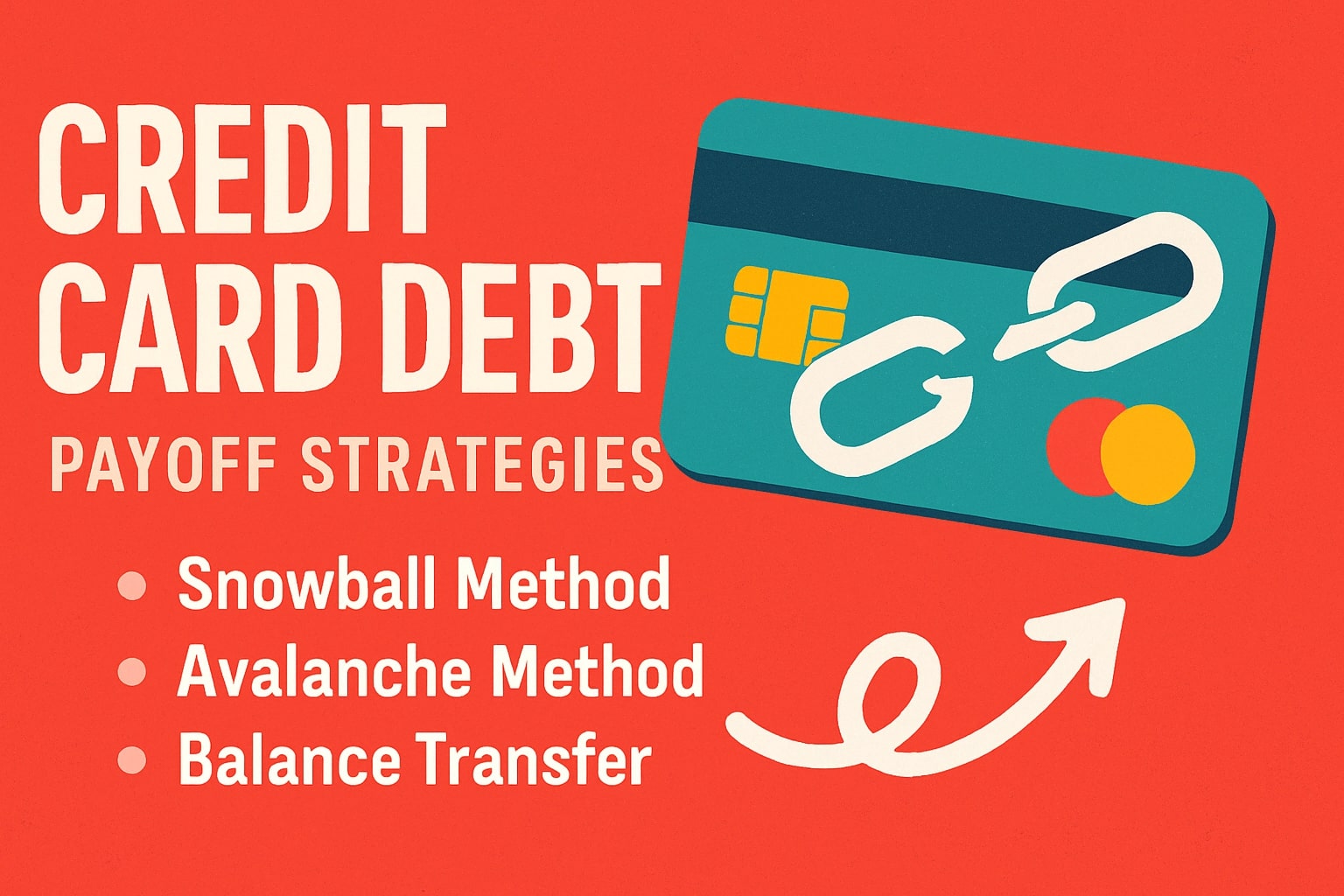Tackling Credit Card Debt: Smart Strategies to Pay It Off Faster

Tackling Credit Card Debt: Smart Strategies to Pay It Off Faster
High-interest credit card debt can feel like quicksand – stressful, overwhelming, and hard to escape. Those double-digit APRs mean your balances can grow quickly, even if you're making minimum payments. But the good news is, you can break free. With a clear strategy and consistent effort, you can pay off that debt faster than you might think.
Before diving into payoff methods, the crucial first step is to stop adding to the debt. Put the cards you're trying to pay off away (or even freeze them – literally!). Stick to your budget (you have one, right?) and avoid new charges while you focus on eliminating the existing balances.
Now, let's explore some popular and effective debt payoff strategies:
Choose Your Attack Plan: Snowball vs. Avalanche
These are two primary methods for tackling multiple debts. The best one depends on your personality and what keeps you motivated. Both require you to pay the minimum on all debts except the one you're targeting, where you'll throw any extra money you can find.
1. The Debt Snowball Method:
- How it works: List your debts from the smallest balance to the largest, regardless of interest rates. Focus all extra payments on the smallest balance first. Once it's paid off, take that entire payment amount (the minimum plus the extra) and add it to the minimum payment of the next smallest balance. Repeat this process, creating a "snowball" of payment power rolling towards larger debts.
- Pros: Delivers quick psychological wins early on as smaller debts disappear, boosting motivation. Often feels simpler to manage.
- Cons: You'll likely pay more in total interest compared to the Avalanche method because you're not prioritizing high-interest debts first.
2. The Debt Avalanche Method:
- How it works: List your debts from the highest interest rate (APR) to the lowest, regardless of balance size. Focus all extra payments on the debt with the highest APR. Once that's paid off, take the entire payment amount and add it to the minimum payment of the debt with the next highest APR. Continue until all debts are gone.
- Pros: Mathematically the most efficient method. Saves you the most money on interest over the long run.
- Cons: It might take longer to pay off your first debt, which can feel less motivating initially. Requires more discipline to stick with it without those early wins.
Which is best? The one you'll actually stick with! If quick wins keep you going, choose Snowball. If saving the maximum amount of money is your driver, choose Avalanche.
Consider a Tool: Balance Transfers
A balance transfer involves moving your high-interest credit card debt to a new credit card offering a 0% introductory APR for a set period (often 12-21 months).
- Pros: Allows you to pause interest charges temporarily. More of your payment goes directly towards reducing the principal balance, potentially speeding up payoff significantly. Can consolidate multiple balances onto one card.
- Cons & Warnings:
- Transfer Fees: Most cards charge a fee (typically 3-5% of the transferred amount) upfront. Calculate this cost.
- Requires Good Credit: You'll need decent credit to qualify for the best 0% offers.
- The Post-Intro APR Cliff: If you don't pay off the entire transferred balance before the 0% intro period ends, the remaining balance will be subject to the card's regular, often high, APR. Have a plan to pay it off in time!
- Temptation: Don't use the new card for spending, and don't run up balances on the old cards you just cleared.
Avoiding Common Pitfalls
- Making Only Minimum Payments: High interest rates mean you'll barely make a dent in the principal this way. Always pay more than the minimum if possible.
- Not Having a Budget: You need to track your spending to find extra money to put towards debt.
- Closing Cards Immediately: While tempting after paying one off, closing accounts can potentially lower your credit score (it affects your credit utilization ratio and average age of accounts). Consider keeping cards with no annual fee open but unused.
- Ignoring the Root Cause: Understand why the debt accumulated (overspending, emergency, etc.) and adjust habits to prevent it from happening again.
You Can Do This!
Getting out of credit card debt takes focus and discipline, but it's absolutely achievable. Choose a strategy (Snowball or Avalanche), explore tools like balance transfers carefully, stick to your budget, and celebrate your progress along the way. Financial freedom from high-interest debt is worth the effort!
Disclaimer:
The information provided in this article is for informational and educational purposes only and does not constitute financial, investment, legal, or tax advice. The content is based on sources believed to be reliable, but the author and publisher make no representations or warranties as to its accuracy, completeness, or timeliness.
The author is not a licensed financial advisor, registered investment adviser, or broker-dealer. You should consult with qualified professionals (such as a Certified Financial Planner®, accountant, or attorney) who can assess your individual situation before making any financial decisions or taking any action based on the information presented here.
Investing involves risk, including the possible loss of principal. Past performance is not indicative of future results. Any examples or discussions of specific investments, strategies, or products are for illustrative purposes only and are not endorsements or recommendations.
Financial markets and regulations change frequently, and the information in this article may become outdated. We are not obligated to update any information herein. Your financial situation is unique, and any decisions you make should be based on your own research, due diligence, and consultation with professional advisors, considering your personal objectives, risk tolerance, and financial circumstances. Reliance on any information provided in this article is solely at your own risk.
Stay Ahead with Our Newsletter
Get exclusive financial insights, market analysis, and expert tips delivered directly to your inbox.